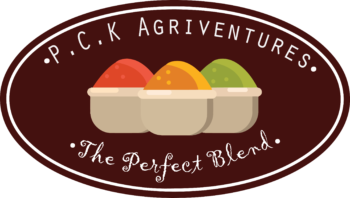spice Harvest calendar
yearly harvesting pattern
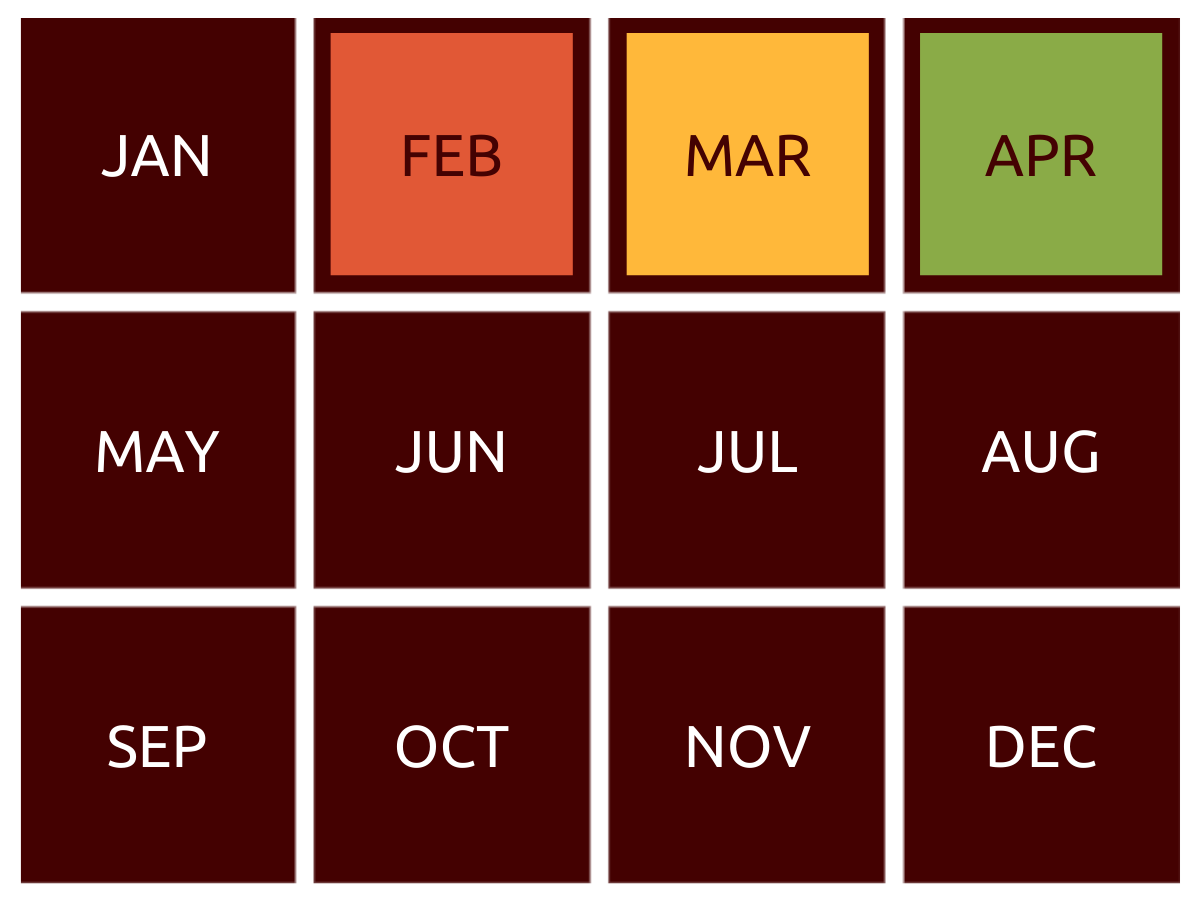
Some facts about coriander
- Coriander has been around for centuries and is believed to be one of the oldest herbs used today.
- The name ‘coriander’ comes from the Greek word koris, which is actually the word for stink bug. This reference comes from the smell that bruised coriander leaves give off, which is thought to be similar to that of a stink bug.
- Did you know that coriander plants actually flower and bear fruit? The fruit is what we commonly know as coriander seeds, and these are also used in cooking.
- Whether it’s called coriander, cilantro or any other name, this herb is one of the most widely used herbs in a range of different countries and cuisines around the world.
do you wish to read more about coriander? have a look at these interesting articles.
yearly harvesting pattern
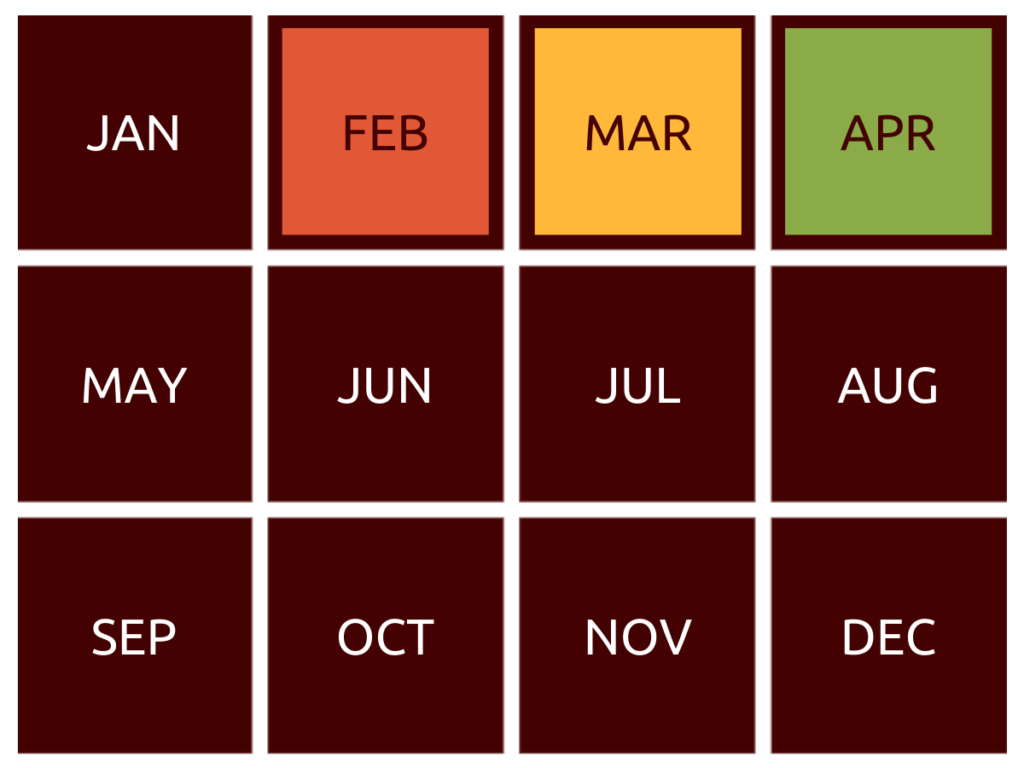
health benefits of cumin seeds
- Cumin is a great source of iron, which helps with increasing hemoglobin levels in the blood, improving blood flow and also promoting a healthy menstrual cycle.
- Cumin also helps to reduce the signs of premature aging, such as wrinkles, age spots and sagging skin.
- Cumin promotes good sleep as it is simultaneously a stimulant as well as a relaxant.
- The essential oils found in cumin help fight viral infections which are often the cause of common colds. Cumin also helps to suppress the development of coughing as it dries up the excess mucus. The high content of iron and vitamin C found in cumin also help to strengthen the immune system and keep infections developing or from becoming worse.
do you wish to read more about cumin? have a look at these interesting articles.
yearly harvesting pattern

amazing healing benefits of fennel seeds
- A study published in the Journal of Food Science, found that chewing on fennel seeds helped increased the nitrite content in saliva, making it a great natural way to keep a check on blood pressure levels. Apart from this, fennel seeds are also a very rich source of potassium and since potassium is an essential component of cells and body fluids, it helps control your heart rate and blood pressure.
- Drinking fennel tea, regularly helps flush out excess fluids as it works as a diuretic. In addition, fennel seed helps remove toxins and reduces the risk of urinary tract problems.
- Fennel seeds and their phytonutrients help clear sinuses. Sinus is a condition in which the cavities around the nasal passages become inflamed.
- Fennel seeds reduce all Trodosha (Vata, Pita, Kapha). The seeds have a cooling effect on the body. It is a good idea to consume a fennel seed drink during the scorching summer, to relieve heat from the body.
do you wish to read more about fennel seeds? have a look at these interesting articles.
yearly harvesting pattern
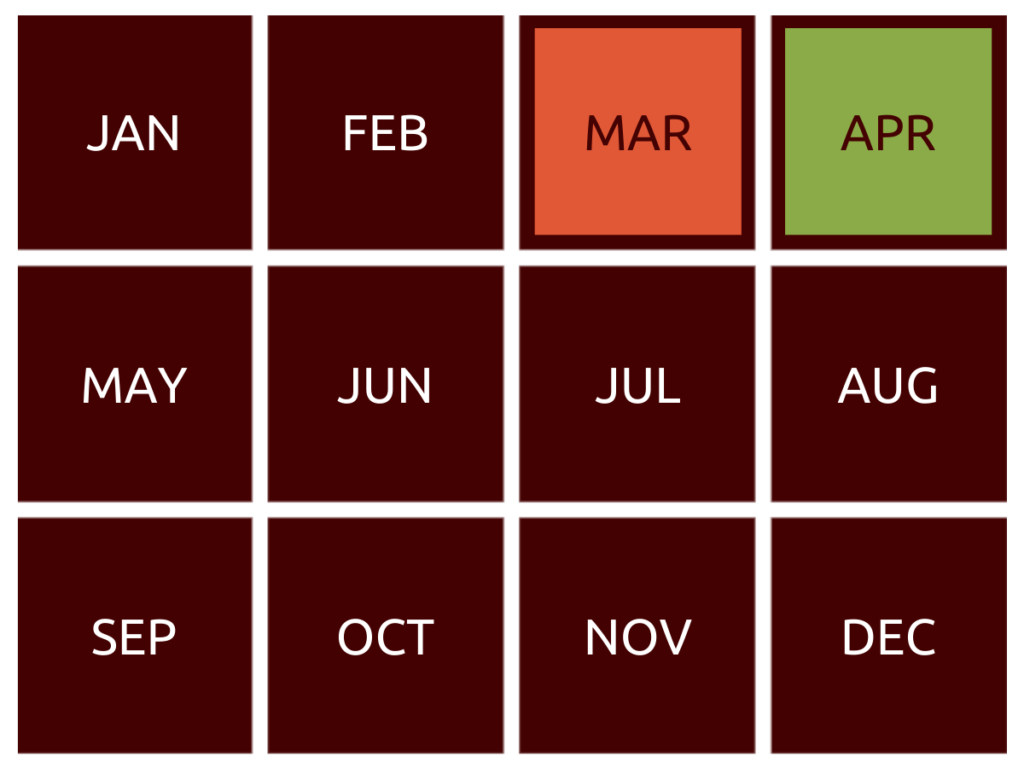
great uses of fenugreek seeds
- People with diabetes are often recommended to include fenugreek seeds in their diet because of the positive effects they can have on their health. Studies conducted on the effect of fenugreek seeds on type 2 diabetes have produced favorable results. It was found that fenugreek seeds help control blood sugar and decrease insulin resistance.
- Fenugreek seeds have been used by women to increase their breast milk production across Asia. The herb contains phytoestrogen that boosts milk production in lactating mothers.
- Fenugreek seeds can also help in reducing the pain of menstrual cramps as well as other symptoms associated with menstruation.
- Fenugreek seeds have a significant effect on cardiovascular health. It protects the heart from serious damage during a heart attack. Heart attacks are a major cause of death, and they occur when an artery leading to the heart gets clogged.
do you wish to read more about fenugreek? have a look at these interesting articles.
yearly harvesting pattern

Some interesting facts about mustard
- Mustard was the first condiment humans ever put on their food. Egyptian pharaohs stocked their tombs with mustard seeds to accompany them into the afterlife, but the Romans were the first to grind the spicy seeds into a spreadable paste and mix them with a flavorful liquid—usually, wine or vinegar. French monks, who mixed the ground seeds with “must,” or unfermented wine, inspired the word “mustard,” which stems from the Latin mustum ardens (roughly meaning “burning wine.”)
- Dijon mustard originated in 1856, when Jean Naigeon of Dijon replaced the usual ingredient of vinegar with verjuice, the acidic “green” juice of unripe grapes. Most mustards from Dijon today contain white wine rather than verjuice.
- Today, mustard is one of the most popular and widely used spices and condiments in the world. It has been called the third most important spice after salt and pepper.
do you wish to read more about mustard? have a look at these interesting articles.
yearly harvesting pattern
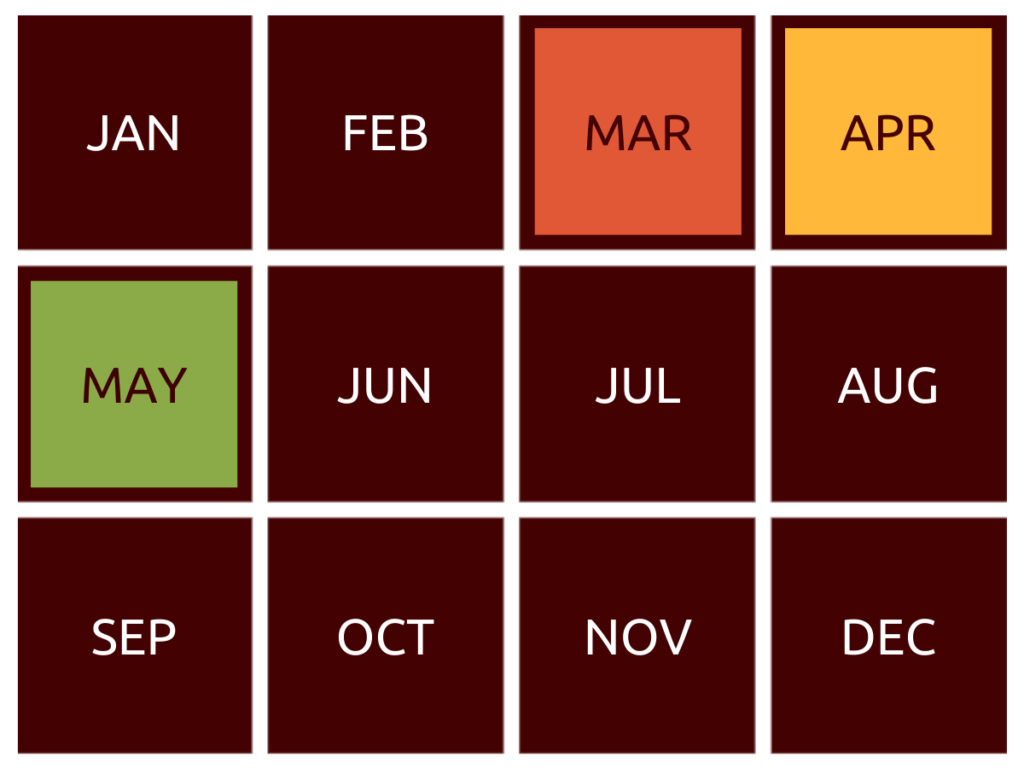
Some great facts about turmeric
- Turmeric serves as a natural pain reliever.
- It is a good source of Vitamin C, Magnesium, Iron and Potassium.
- It also aids in digestion and gives our bodies liver support.
- Turmeric is often used as a fabric dye for clothing.
- Turmeric is a natural antivenom for bites from a King Cobra.
- Curcumin found inside Turmeric is also the only food that’s been shown to “melt away” ominous beta-amyloid plaques associated with cognitive diseases.
- The use of turmeric dates back nearly 4000 years to the Vedic culture in India, where it was used as a culinary spice and had some religious significance. India is currently the world’s largest producer and consumer of the powder.
do you wish to read more about turmeric? have a look at these interesting articles.
yearly harvesting pattern
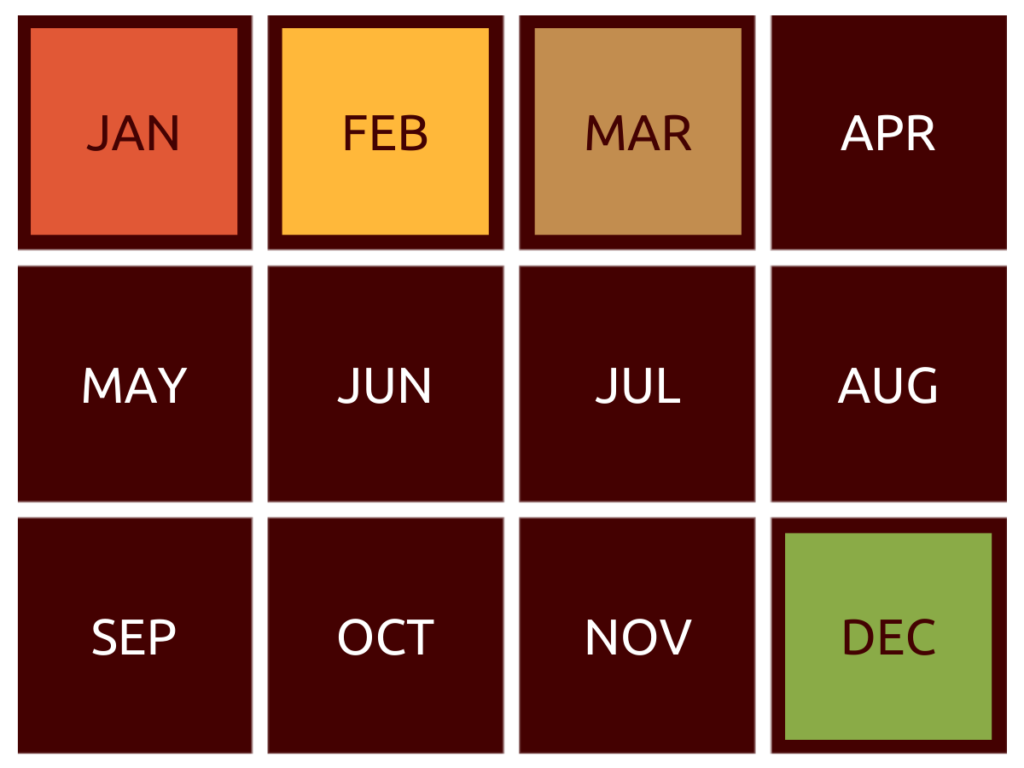
some interesting facts about red chilli
- Today there are probably 400 different chillies grown. It’s one of the most widely cultivated crops in the world, grown from the Far East, China, Japan, Thailand and Indonesia to India to Mexico.
- According to legend, Spanish priests called the first chilli “the soup of the Devil” because they believed that chilli peppers were an aphrodisiac.
- The fiery sensation of chillies is caused by capsaicin, a potent chemical that survives both cooking and freezing, but apart from the burning sensation it also triggers the brain to produce endorphins, natural painkillers that promote a sense of well being.
- Chillies are loaded with vitamin A, a potent antioxidant and boost to the immune system. As the pods mature and darken, high quantities of vitamin C are gradually replaced with beta carotene and the capsaicin levels are at their highest. Due to these capsaicin levels, some believe that eating chillies may have an extra thermic effect, temporarily speeding up the metabolic rate, hence burning off calories at a faster rate.
do you wish to read more about red chilli? have a look at these interesting articles.
yearly harvesting pattern
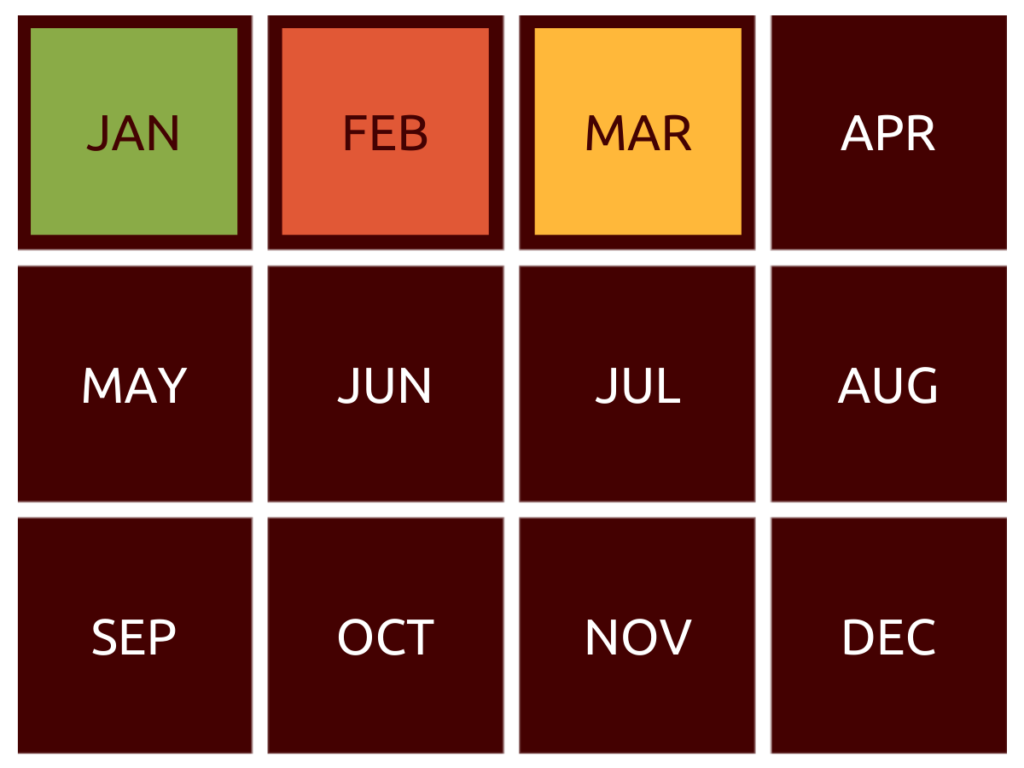
Some facts about black pepper
- Black Pepper comes from the dried fruit peppercorn (piper nigrum). It grows on a perennial flowering vine.
- Accounting for about 20% of the monetary value of the world’s spice trade, Black Pepper is mainly produced in India, Vietnam, Brazil and Indonesia.
- The distinctive Pepper taste is a result of the chemical pepperine found in the white center of the Peppercorn.
- Black Pepper represents about 50% of a typical restaurant’s spice usage.
- Pepper is rich in both vitamin A and C. Black Pepper also has a very high caffeine content.
- During the Middle Ages, Peppercorns were worth more than silver in weight.
- Pepper has been used in cooking for over 4,000 years. Pepper was placed in Egyptian tombs to accompany the pharaohs over 2,500BC
do you wish to read more about black pepper? have a look at these interesting articles.
yearly harvesting pattern

interesting facts about green cardamom
- Cardamom is one of the oldest spices in the world, and the most popular spice in ancient Rome was probably cardamom. It is the world’s third most expensive spice, saffron being the most expensive.
- Throughout the Arab world, Cardamom is one of the most popular spices, with Cardamom coffee being a symbol of hospitality and prestige. The spice is also very popular in the Scandinavian countries where it is used more extensively than cinnamon.
- Cardamom is the dried, unripened fruit of the perennial Elettaria cardamomum. Enclosed in the fruit pods are tiny, brown, aromatic seeds which are slightly pungent to taste.
- Green cardamom is the most common variety of this spice pod and is also known as true cardamom. It is used in both sweet and savory food preparations, like kheer and biryani, and is extremely fragrant. Black cardamom, on the other hand, is not as fragrant and used primarily in savory dishes. In fact, it is one of the spices used to prepare garam masala. Out of these two types, black cardamom is more famous for its medicinal properties.
do you wish to read more about green cardamom? have a look at these interesting articles.
yearly harvesting pattern
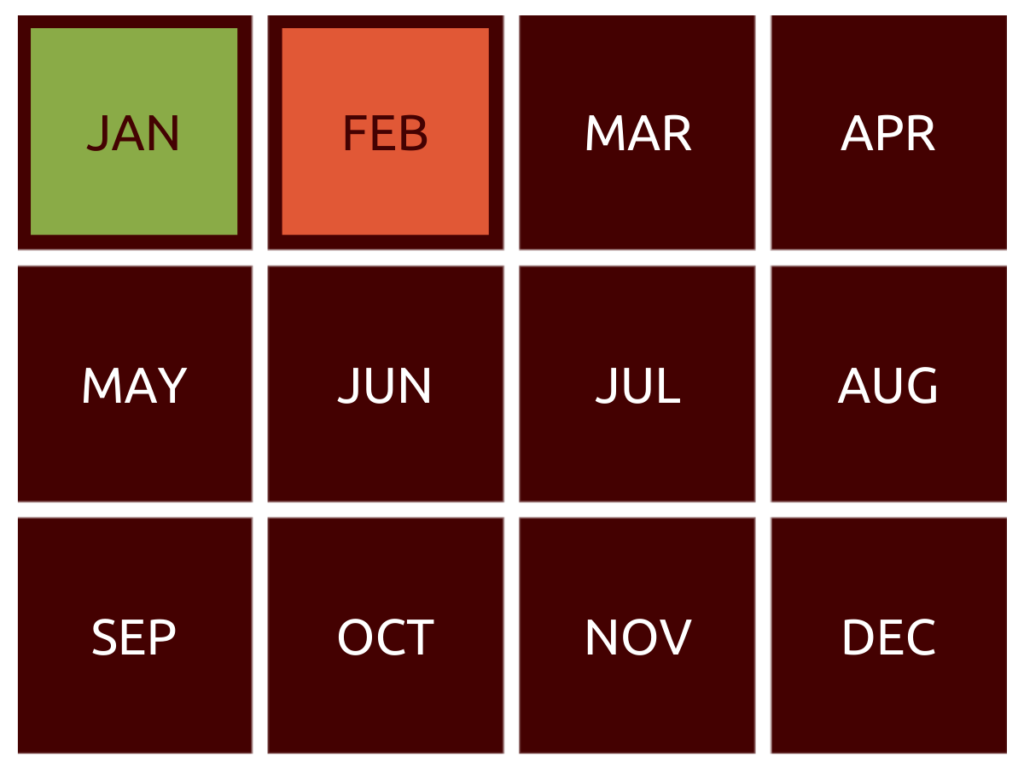
Some facts about bay leaf
- The wood of California Bay Leaf is considered a world-class tonewood. It is sought after by the makers of stringed instruments such as the violin or guitar. It is also used to construct the backs and sides of acoustic guitars. The wood gives a beautiful looking guitar that produces excellent over-tone harmonics.
- Just like turmeric, garlic, ginger, bay leaves are traditionally used as an insects’ bugs’ and pest’s repellent. They are a safer option compared to chemical-based repellents.
- Since the wood of Bay Leaf is hard, it is rendered useful by woodworkers for making wooden bowls, spoons, and other wooden specimens. It is also used as lumber in furniture making like tables, shelves, table legs, jewelry boxes, cabinet doors and more.
- Next time you use bay leaf in your kitchen, you know there’s much more to it.
do you wish to read more about bay leaf? have a look at these interesting articles.
yearly harvesting pattern

some great benefits of curry leaf
- According to researchers in India, curry leaves have high content of anti-oxidants. It also contains several vitamins which makes it super healthy for consumption. These properties of kadi patta makes it good for heart health and helps in preventing certain diseases.
- Kadi patta is believed to be extremely good for hair growth. Curry leaves oil or paste, both can help you prevent hair loss or remove dandruff.
- You already came across the high vitamin content of curry leaves. The presence of vitamin A makes it good for eyes and vision.
- These green leaves help in skin nourishment as well. The paste of curry leaves works best in case of cuts, burns or bites. It improves skin health and gives you clean and clear skin.
do you wish to read more about curry leaf? have a look at these interesting articles.
yearly harvesting pattern
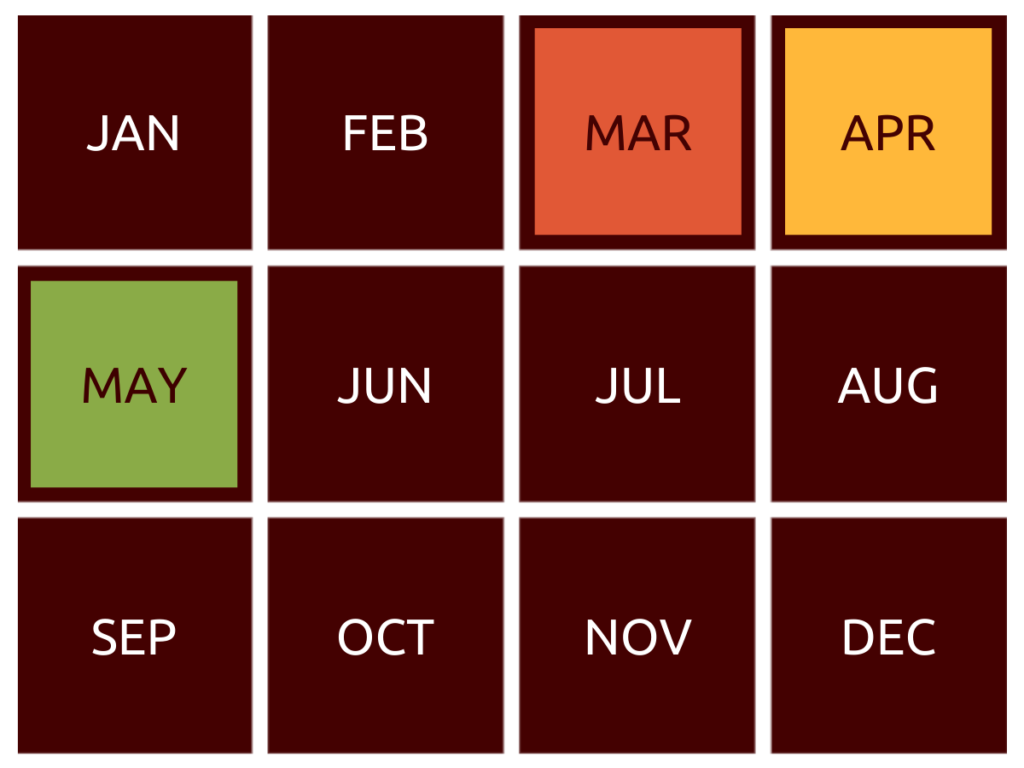
Some facts about mint leaf
- Mint leaves are an especially rich source of Vitamin A, which is a critical vitamin for eye health and night vision. It also contains Vitamin C (protects your cells) and B2 (helps break down carbohydrates and proteins). Mint also contains notable amounts of calcium, copper, and magnesium.
- Mint is a source of menthol, which is a cooling and relaxing agent. Because of this, mint is a really great way to produce relief for discomfort. It’s especially well known for treating skin burns, but is also useful for relieving respiratory difficulties.
- Additionally, mint is also quite good at relaxing the muscles in your body. It’s used to treat stomach and chest pains. Most notably, it may be able to treat Irritable Bowel Syndrome because it relaxes the muscles of the digestive tract. One study showed that 75% of patients with IBS that took peppermint oil felt relief, as compared to 38% of patients that were in the placebo group.
do you wish to read more about mint leaf? have a look at these interesting articles.
yearly harvesting pattern

Some facts about kalonji (black cumin)
- Kalonji has been shown to be especially effective at lowering cholesterol. One review of 17 studies found that supplementing with kalonji was associated with significant decreases in both total and “bad” LDL cholesterol, as well as blood triglycerides. Interestingly, it also found that kalonji oil had a greater effect than kalonji seed powder. However, only seed powder increased levels of “good” HDL cholesterol.
- Another study in 57 people with diabetes showed that supplementing with kalonji for one year decreased total and LDL cholesterol, all while increasing HDL cholesterol
- Kalonji is high in antioxidants, which help neutralize harmful free radicals that may contribute to the development of diseases like cancer.
- Both test-tube and human studies have found that kalonji may be effective against several types of bacterial infections.
do you wish to read more about black cumin? have a look at these interesting articles.
yearly harvesting pattern

Some facts about dill seed
- It was popular in the ancient Greek and Roman cultures, where it was considered a sign of wealth and was revered for its many healing properties.
- Dill was used by Hippocrates, the father of medicine, in a recipe for cleaning the mouth. Ancient soldiers would apply burnt dill seeds to their wounds to promote healing.
- The curative properties of dill have been honored throughout history. The Conqueror Charlemagne even made it available on his banquet tables, so his guests who indulged too much could benefit from its carminative properties.
- Dill is a very good source of calcium and a good source of dietary fiber, vitamin A, B-complex vitamins, vitamin C, iron, manganese, magnesium, phosphorus, potassium, sodium and zinc.
- An essential oil from the seed (dill seed oil) is used in the food industry for flavoring as well, and used in perfuming soaps and in medicines.
do you wish to read more about dill seed? have a look at these interesting articles.
yearly harvesting pattern
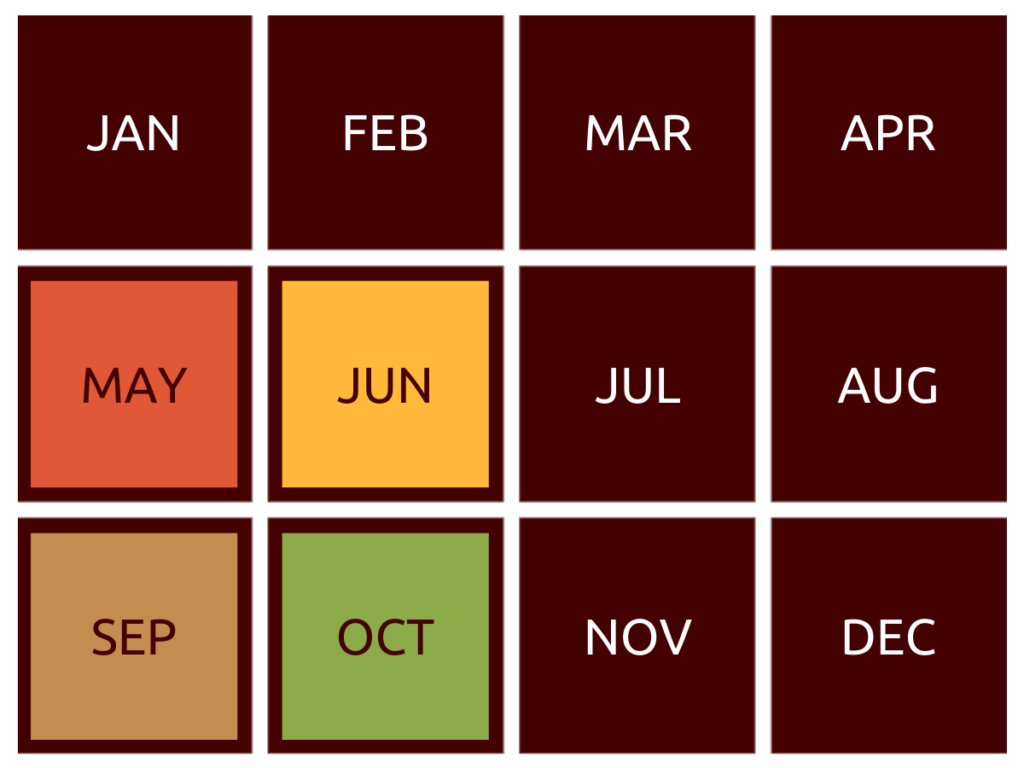
some interesting facts about sesame
- One of most important facts about these tiny little seeds is that they are an abundant source of minerals. 85g of sesame seeds provides 73.5% copper, 44.5% manganese, and 35.1% calcium of RDI (recommended daily intake), and good quantities of phosphorous, zinc, and selenium. The impressive amount of copper in sesame seeds is important for people who suffer from Rheumatoid Arthritis.
- How special are we talking here? We all know that fiber is good for our body digestion and more, but did you know that sesame seeds have 2 special fibers called Sesamin and Sesamolin? These fibers are part of a group of fibers called lignans, and they have several important health benefits. Sesamin and Sesamolin are able to help in regulate cholesterol, prevent high blood pressure, and protect our liver from oxidative damage.
- Sesame help reduce stress and anxiety due to it’s increased magnesium content.
do you wish to read more about sesame? have a look at these interesting articles.
yearly harvesting pattern
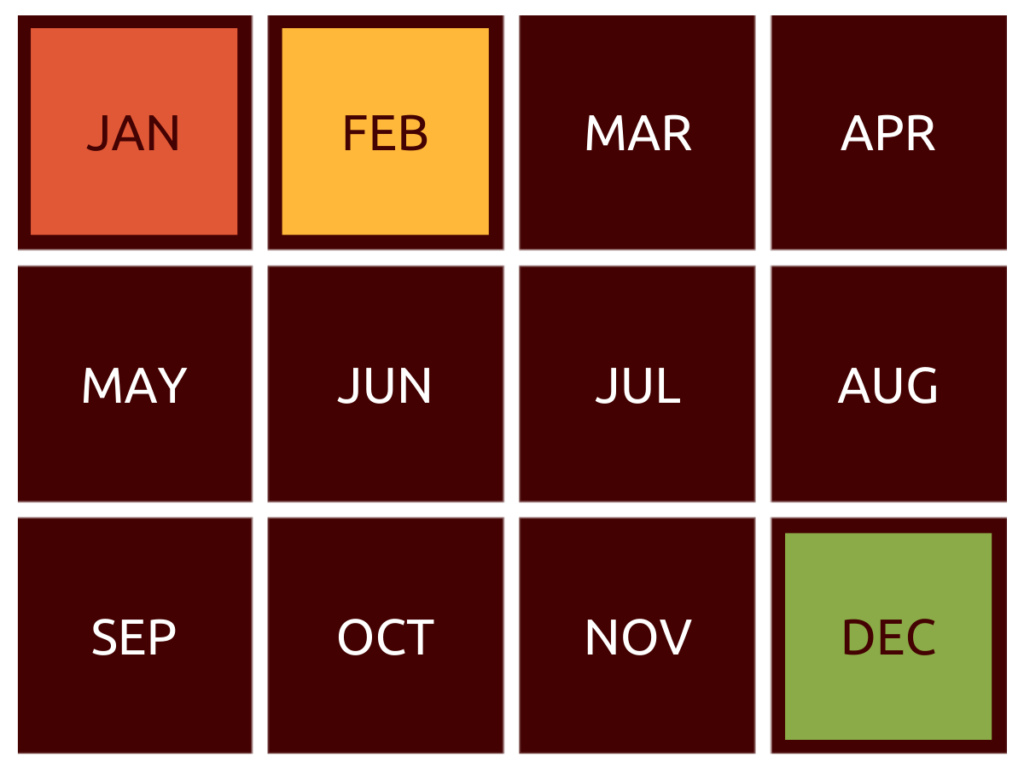
Some facts about kasuri methi
- Coriander has been around for centuries and is believed to be one of the oldest herbs used today.
- The name ‘coriander’ comes from the Greek word koris, which is actually the word for stink bug. This reference comes from the smell that bruised coriander leaves give off, which is thought to be similar to that of a stink bug.
- Did you know that coriander plants actually flower and bear fruit? The fruit is what we commonly know as coriander seeds, and these are also used in cooking.
- Whether it’s called coriander, cilantro or any other name, this herb is one of the most widely used herbs in a range of different countries and cuisines around the world.
do you wish to read more about kasuri methi? have a look at these interesting articles.
yearly harvesting pattern

medicinal values of ajwain seed
- The active enzymes in ajwain help in boosting our digestive functions by facilitating the release of gastric juices.
- Ajwain helps in avoiding nasal blockage by discharging the mucus easily. Prepare a paste of ajwain seeds and jaggery by heating it and take 2 teaspoons of it twice a day to feel better. This also helps in dealing with respiratory ailments like asthma and bronchitis. To provide relief from a migraine headache, take ajwain powder in a thin cloth and inhale it frequently or keep it under your pillow.
- To ease a dreaded ear pain, two drops of ajwain oil are enough. For instant relief from tooth-ache, gargle with a mix of lukewarm water, 1 teaspoon of ajwain and salt. Simply inhaling the fumes of burning ajwain seeds can do wonders for an aching tooth. Besides this, it acts as a great mouth wash and maintains good oral hygiene.
- Drinking ajwain water regularly is known to enhance your rate of metabolism, burns fat and thus helps in losing weight.
do you wish to read more about ajwain seed? have a look at these interesting articles.
yearly harvesting pattern

great facts about black cardaom
- Black cardamom seeds have a dark brown appearance. They are known for their astringent aroma and camphor-like flavor. Both the pods and seeds are widely used in culinary dishes. They also have certain medicinal properties.
- Black cardamom is frequently described in various sources as a low-level substitute for green cardamom, which is however untrue. Although both the spices are interchangeable, the black variety has a far stronger taste, while the green cardamom is preferred for its sweet, mellow fragrance.
- Chewing black cardamom seeds helps to cure loss of appetite.
- Black cardamom is also an important antidote to several health problems like bronchitis, colic, fatigue and stress.
- Black cardamom can cure obesity to some extent.
- Consumption of this cardamom helps proper digestion.
